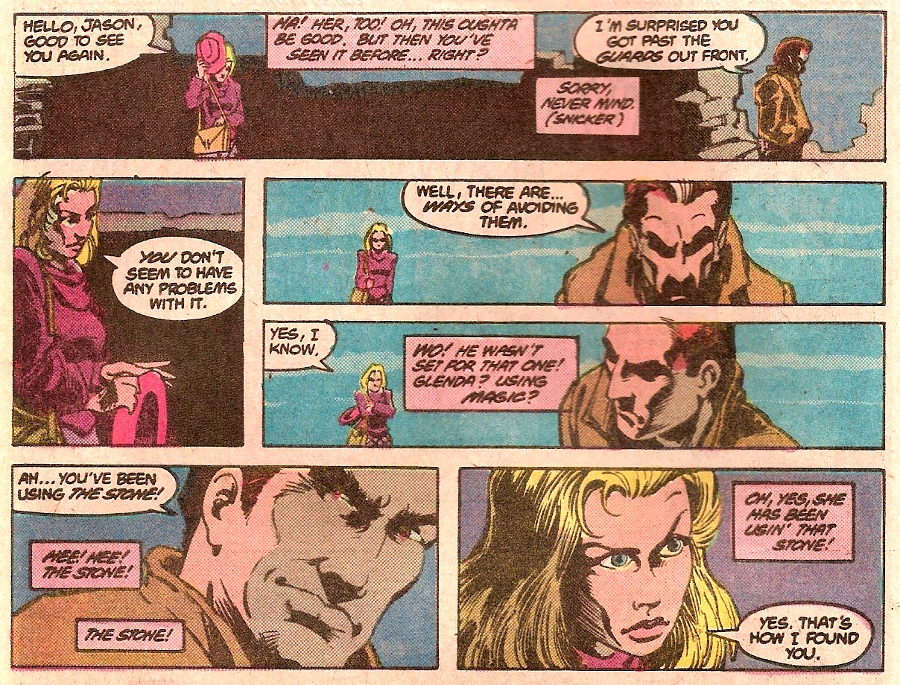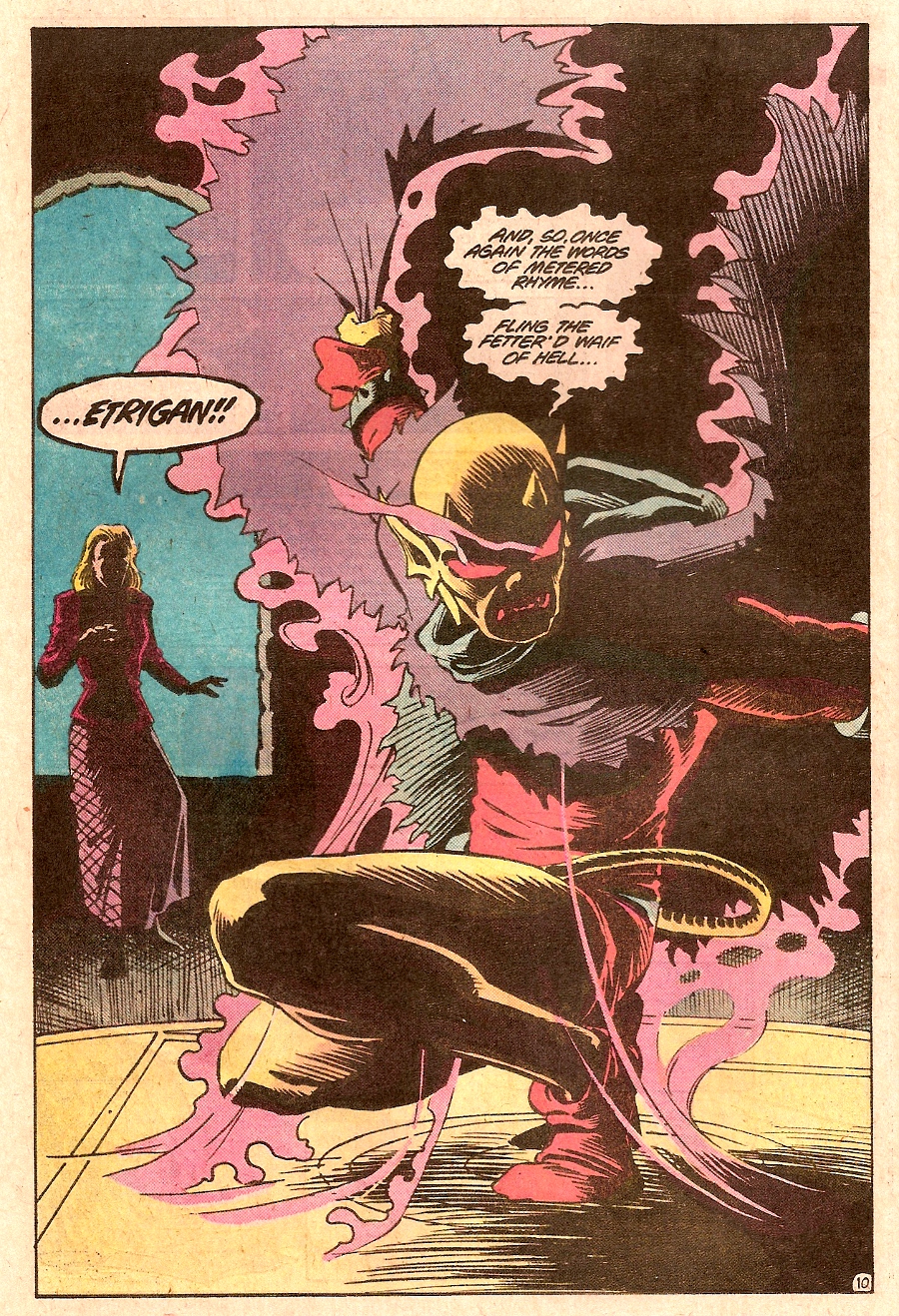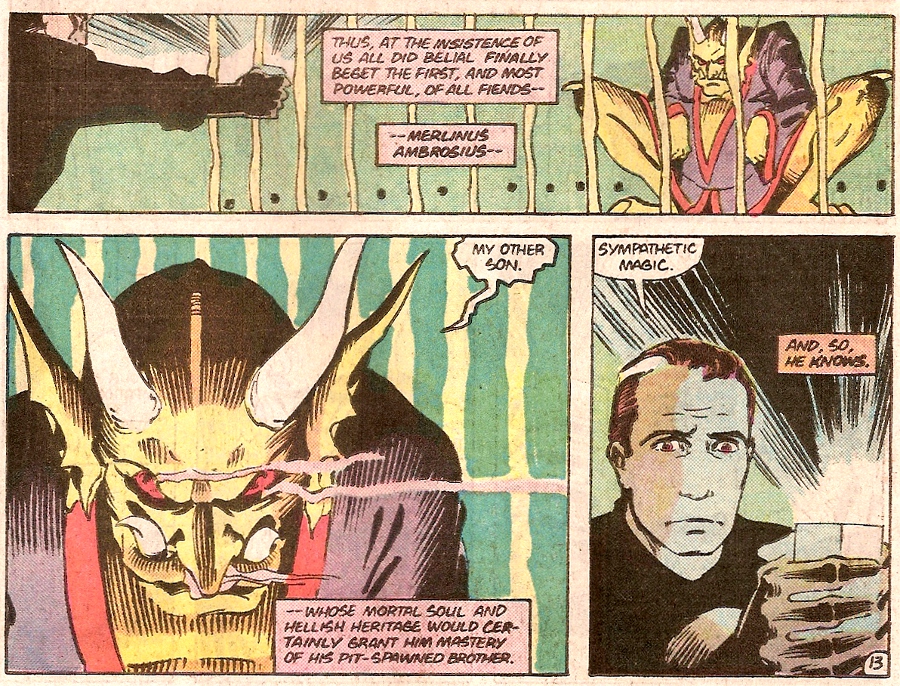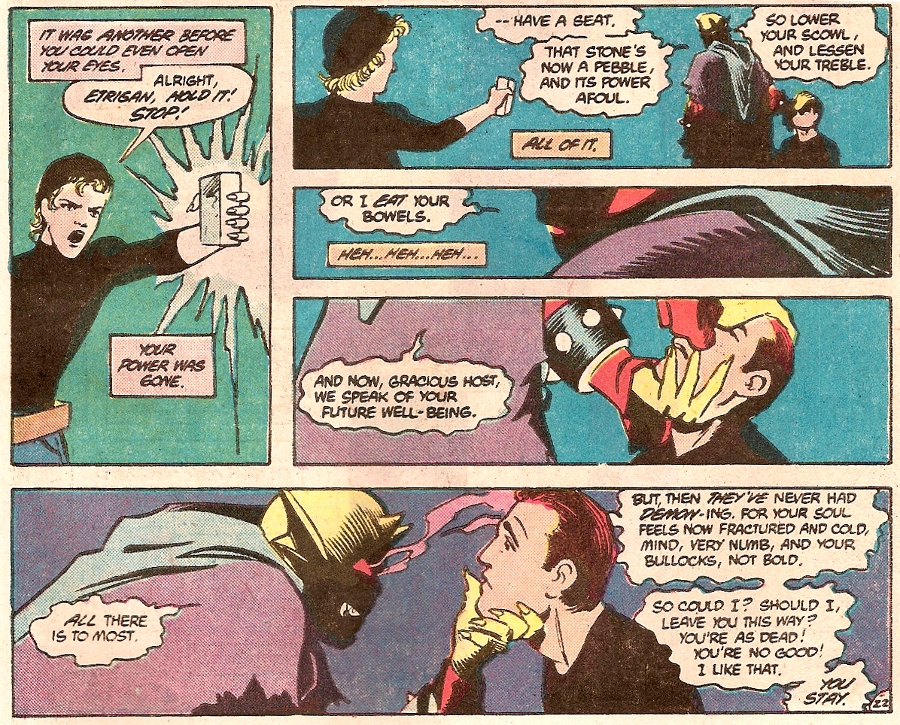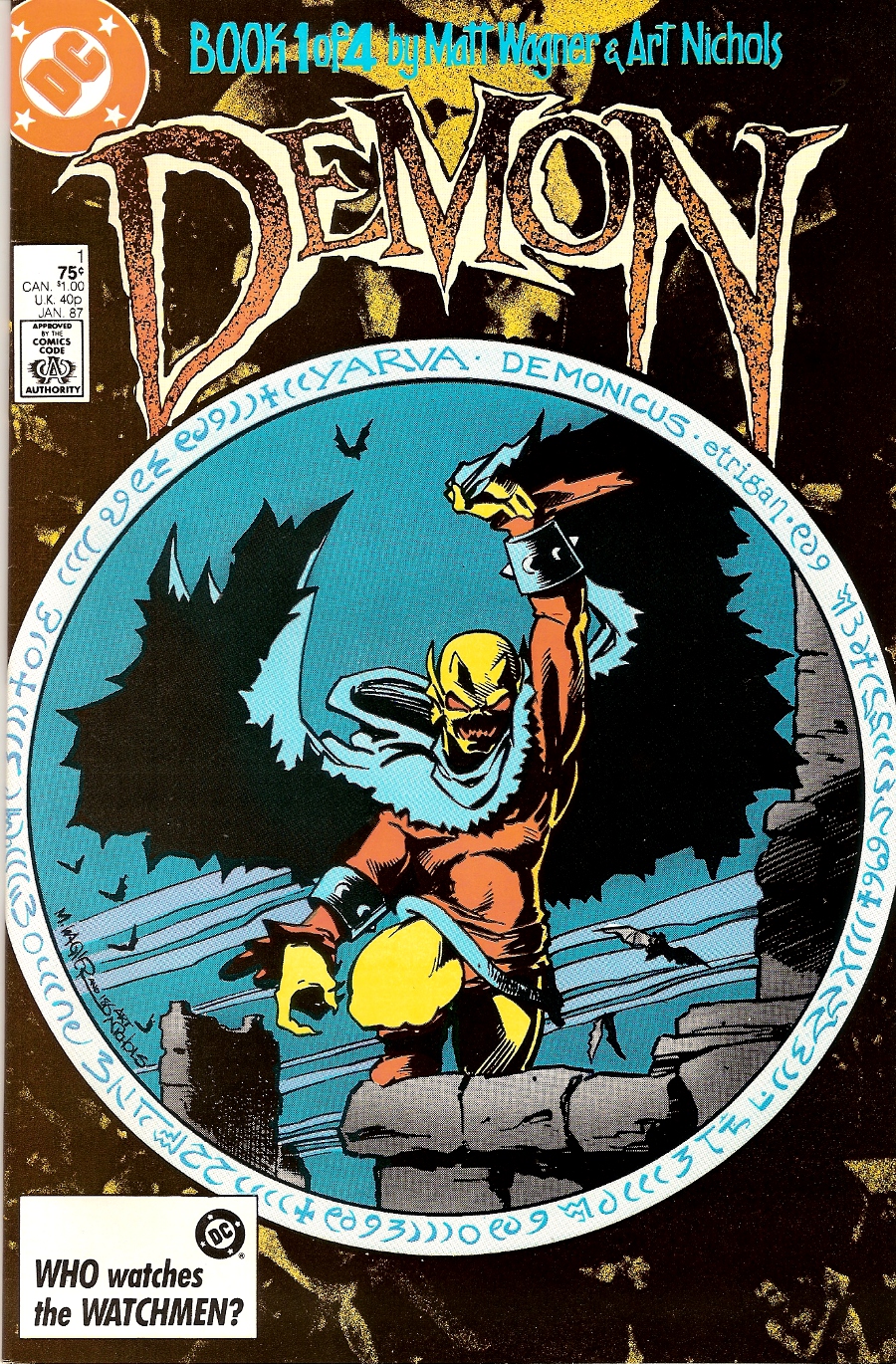 In the 1970’s, faced with a precarious future, the major comics publishers jumped from trend to trend, trying desperately to generate interest and attract a larger readership. They tried hippies. They tried UFO’s when UFO’s were popular. And when there was a huge wave of interest in the occult during the early to mid 70’s, DC and Marvel brought out a series of occult heroes like Ghost Rider, the Son of Satan, Dracula, and Jack Kirby’s Demon.
In the 1970’s, faced with a precarious future, the major comics publishers jumped from trend to trend, trying desperately to generate interest and attract a larger readership. They tried hippies. They tried UFO’s when UFO’s were popular. And when there was a huge wave of interest in the occult during the early to mid 70’s, DC and Marvel brought out a series of occult heroes like Ghost Rider, the Son of Satan, Dracula, and Jack Kirby’s Demon.
The Demon was Etrigan, an evil spirit enslaved by the sorcerer Merlin and trapped in the body of a man named Jason Blood. Etrigan was a reluctant hero, forced to protect Merlin and oppose evil forces like Morgaine Le Fay and Klarion the Witch Boy when he would rather have been out causing havoc himself. His original series ran for only 16 issues.
But then along came Alan Moore, which affected Etrigan in a few significant ways. Number one, Moore used Etrigan as a supporting character in a memorable early issue of his Swamp Thing run, bringing the character back into the consciousness of the audience. Number two, Moore wrote Etrigan’s dialogue in rhyme for some reason, giving Etrigan a unique personality and character which he hadn’t had before.
And number three, the success of Moore’s reinterpretation of Swamp Thing led DC to try to do the same thing with their other occult characters, which is one reason DC hired rising star Matt Wagner to revive Etrigan. Wagner had been doing interesting things with independent publisher Comico, telling the story of an assassin named Grendel and updating the King Arthur myth in Mage.
The first issue of the four-part Demon miniseries came out in late 1986 (cover dated Jan. 1987). It opens with Merlin being held prisoner and tormented by some gloating captor we can’t see. He shows Merlin what is apparently a flashback to how Merlin got captured in the first place, when love interest Glenda tracks Jason Blood down. She’s apparently been searching for a way to free Jason from Etrigan and has found an ancient illustration of Belial, who looks much like Etrigan. She convinces Jason to work with her to solve the mystery.
On the one hand, Wagner’s writing is obviously much more mature than Kirby’s. And the art has a nicely moody feel to it, though I don’t think Art Nichols’s inks work as well with Wagner’s pencils as some other inkers he has worked with. But it’s cluttered–Wagner is going to have trouble fitting everything in four issues–and a little bit of that narrator goes a long way. I’m sick of him already and we’re only on page two of the first issue.
Blood can’t tell Glenda what the deal is with the illustration; he’s got a mental block that keeps him from even seeing it. All he sees is a blank page. So Glenda draws a magic circle around Jason and recites the famous incantation–“Gone, gone, o’ form of man, and rise the demon…”
Wagner’s done a little reinterpretation of the character here, making his costume more fantasy-sorcerous and less superheroey. He has also slimmed Etrigan down. Kirby’s demon was built more like the Hulk than Captain America, but Wagner’s version is more graceful.
Wagner’s version of Etrigan is not a nice guy. Wagner maintains the rhyming that Moore instituted, but the problem is, his meter wanders all over the place, which gets tiresome after a while. Etrigan insults Glenda, but also gives her a piece of the puzzle, telling her the secret location of a book that might give them an answer. They have to battle their way past several demonic guardians, with Jason changing into Etrigan at strategic times, but finally they acquire the book that will explain Belial’s connection to Etrigan.
Which is when evil demons from the mirror kidnap Glenda and take her away. So Etrigan turns to another old friend, Harry Andrews, to help him summon big bad Belial himself. And yes, there is a resemblance, both in appearance and attitude. Blood learns the very disturbing secret of his family.
The summoning does not go exactly as planned. Belial tells Blood how to overcome Merlin and free himself from his bondage, then kills Harry before disappearing and returning Glenda. Blood and Glenda then proceed to Merlin’s hiding place, where they lure Merlin into walking into a hawthorn grove. Merlin disappears (and apparently ends up in Hell), and Jason and Etrigan separate.
And that scene wouldn’t be so bad if that were, say, the two-thirds point of the story–Merlin imprisoned, Blood helpless, Etrigan now running wild on Earth. It would be fascinating to see Blood overcome his obstacles and his past mistakes to free Merlin and assert power over Etrigan once again.
But this was the end of the series. And it’s not as if Wagner was planning to do anything else with the character (he did end up writing and drawing a regular Demon series, but it was a few years later). I can handle a dark take on a character, but the ending of Wagner’s miniseries basically said, “There are no good guys and bad guys. There are bad guys and worse guys, and everybody else is either a dupe (like Glenda and Blood) or cannon fodder (like Harry).”
So when Wagner ended up doing his ongoing Demon series a few years later, I tried one issue, found out I still didn’t like Wagner’s take on the character, and never went back.
Which was too bad, because I really liked most of Wagner’s other work.
Next week: The Demon returns in a special four-in-one monster-hero extravaganza to finish off our month of Halloween.


